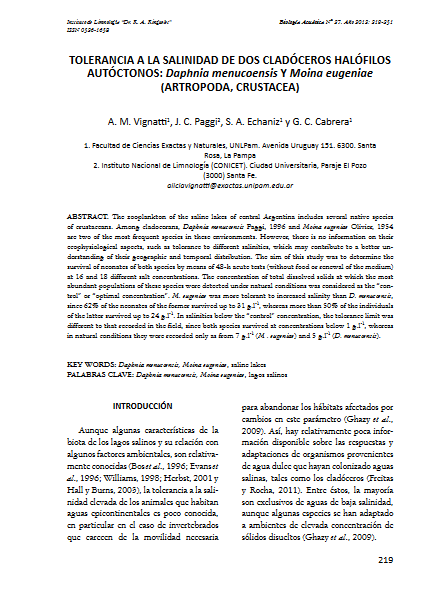Tolerancia a la salinidad de dos cladóceros halófilos autóctonos
Licencia: Creative Commons (by-nc-sa)
Autor(es): Vignatti, Alicia; [et al.]
The zooplankton of the saline lakes of central Argentina includes several native species of crustaceans. Among cladocerans, Daphnia menucoensis Paggi, 1996 and Moina eugeniae Olivier, 1954 are two of the most frequent species in these environments. However, there is no information on their ecophysiological aspects, such as tolerance to different salinities, which may contribute to a better understanding of their geographic and temporal distribution. The aim of this study was to determine the survival of neonates of both species by means of 48-h acute tests (without food or renewal of the medium) at 16 and 18 different salt concentrations. The concentration of total dissolved solids at which the most abundant populations of these species were detected under natural conditions was considered as the "control" or "optimal concentration". M. eugeniae was more tolerant to increased salinity than D. menucoensis, since 62% of the neonates of the former survived up to 31 g.l-1, whereas more than 50% of the individuals of the latter survived up to 24 g.l-1. In salinities below the "control" concentration, the tolerance limit was different to that recorded in the field, since both species survived at concentrations below 1 g.l-1, whereas in natural conditions they were recorded only as from 7 g.l-1 (M . eugeniae) and 5 g.l-1 (D. menucoensis).
[2012]
Compartir:
Una vez que el usuario haya visto al menos un documento, este fragmento será visible.


